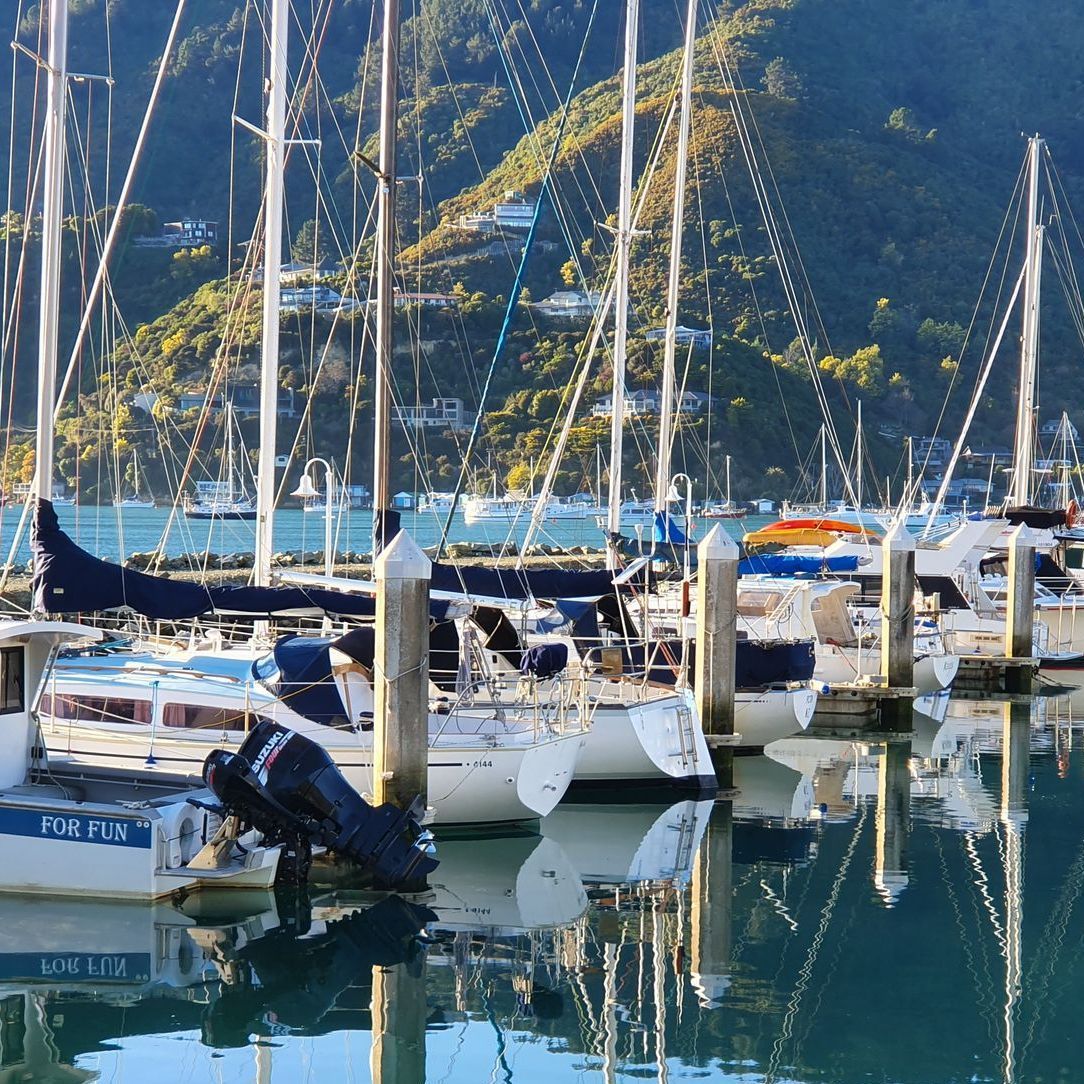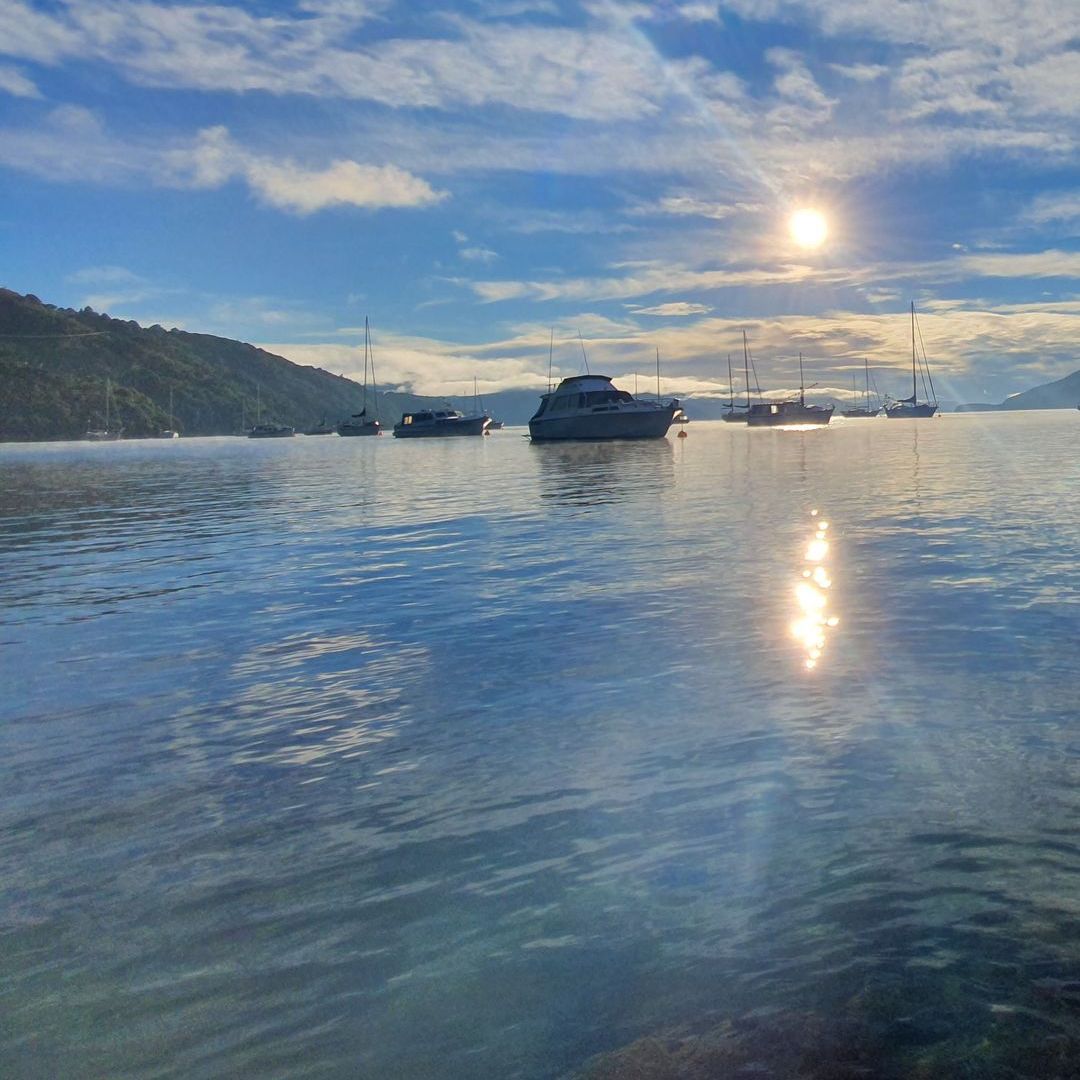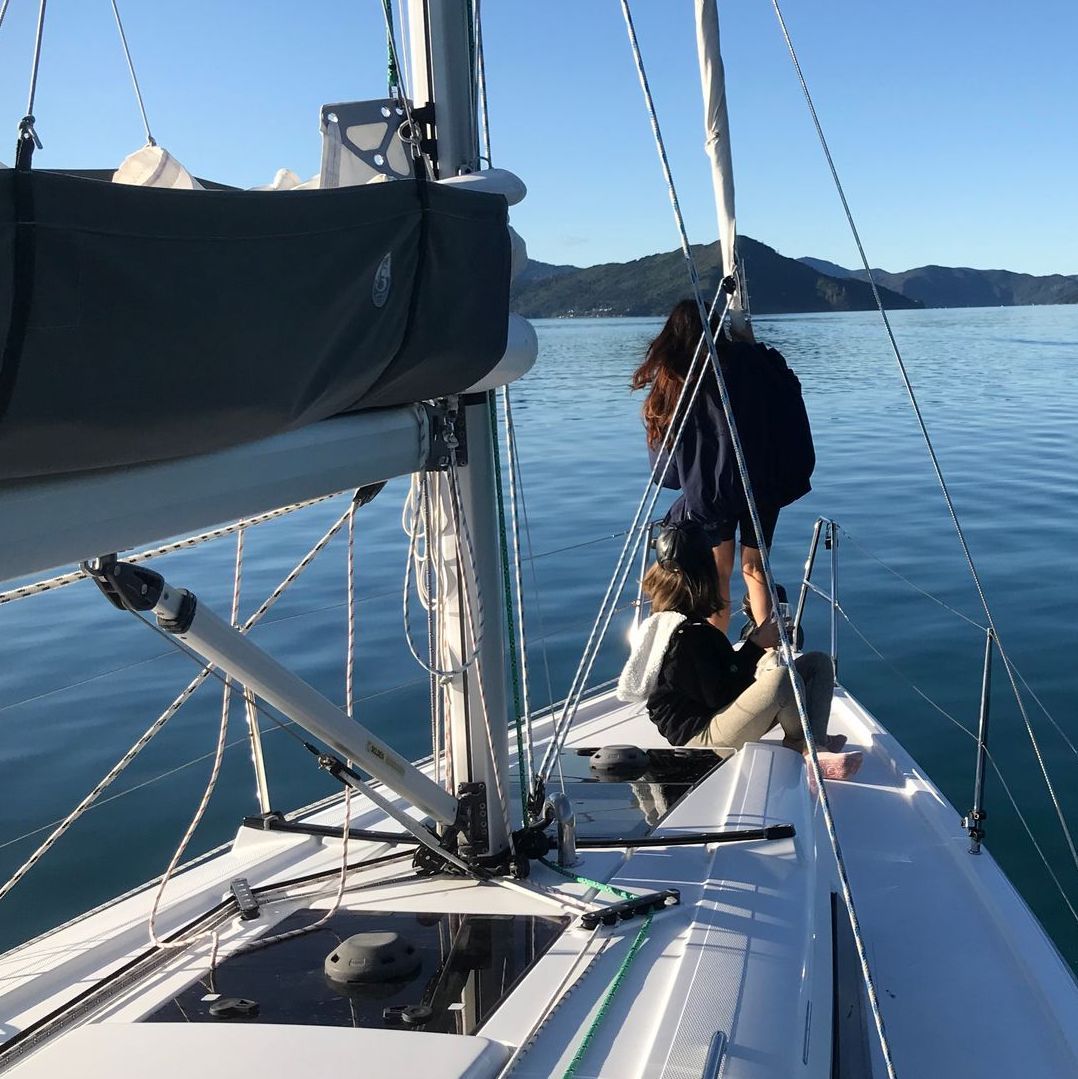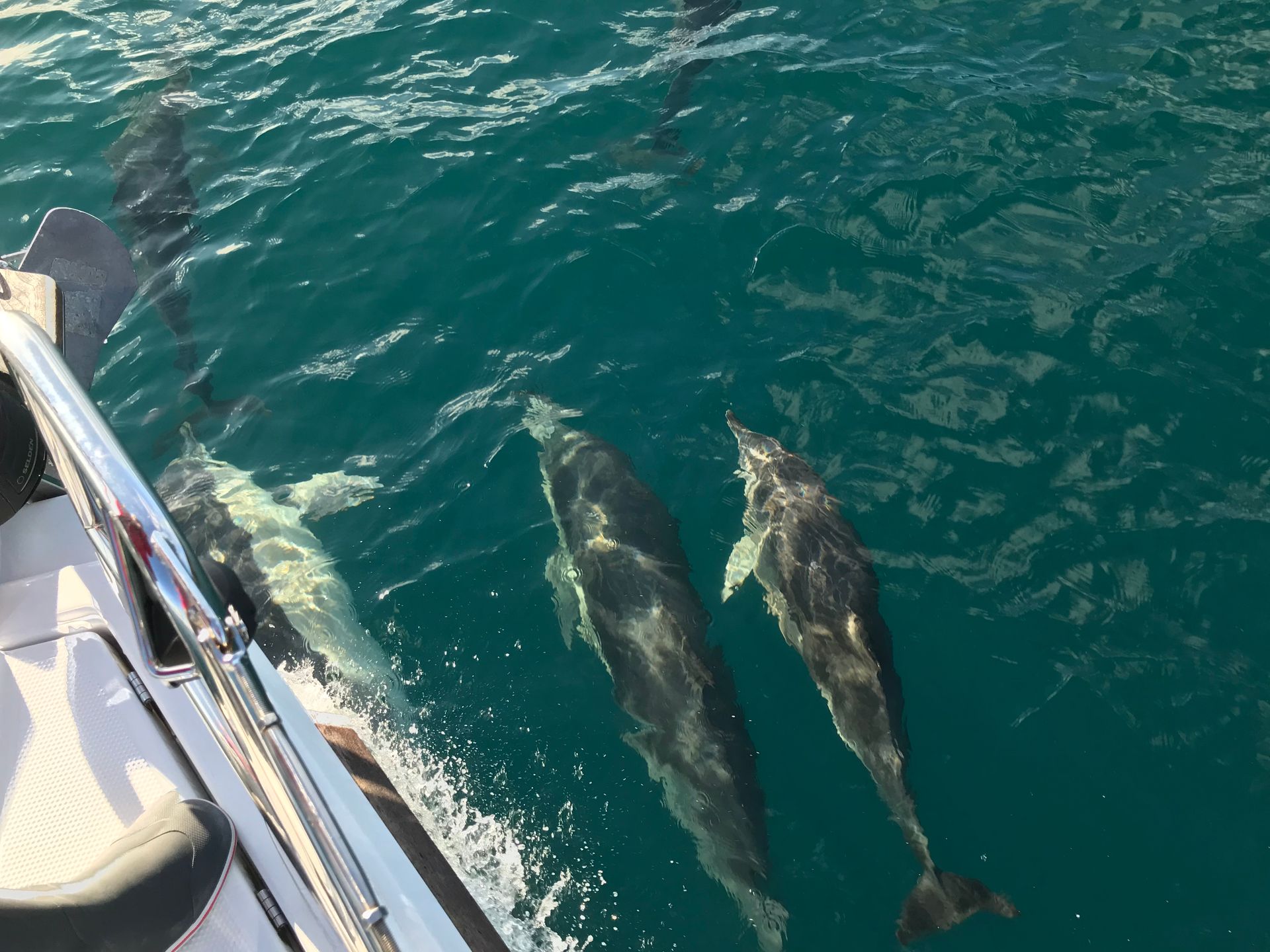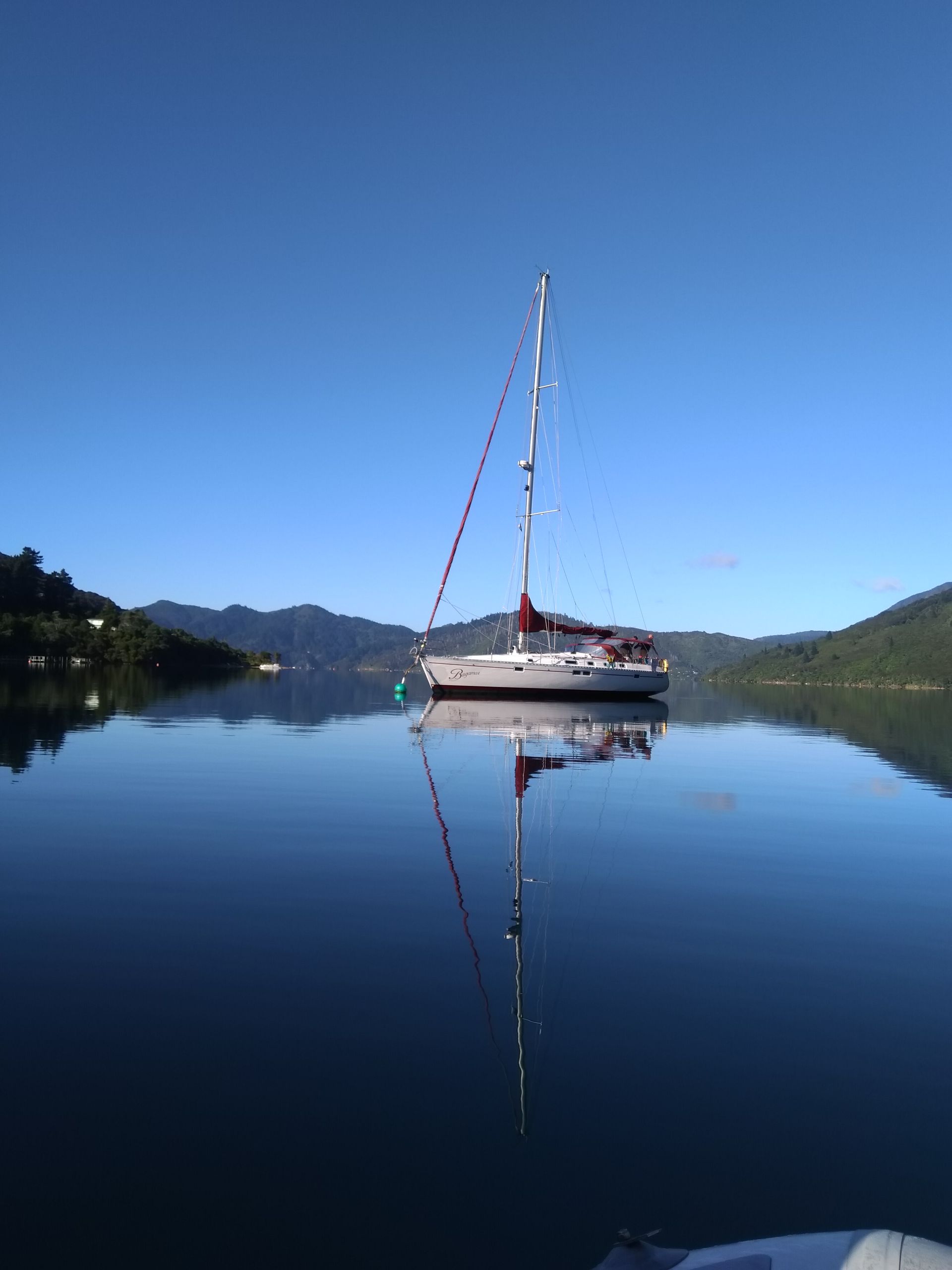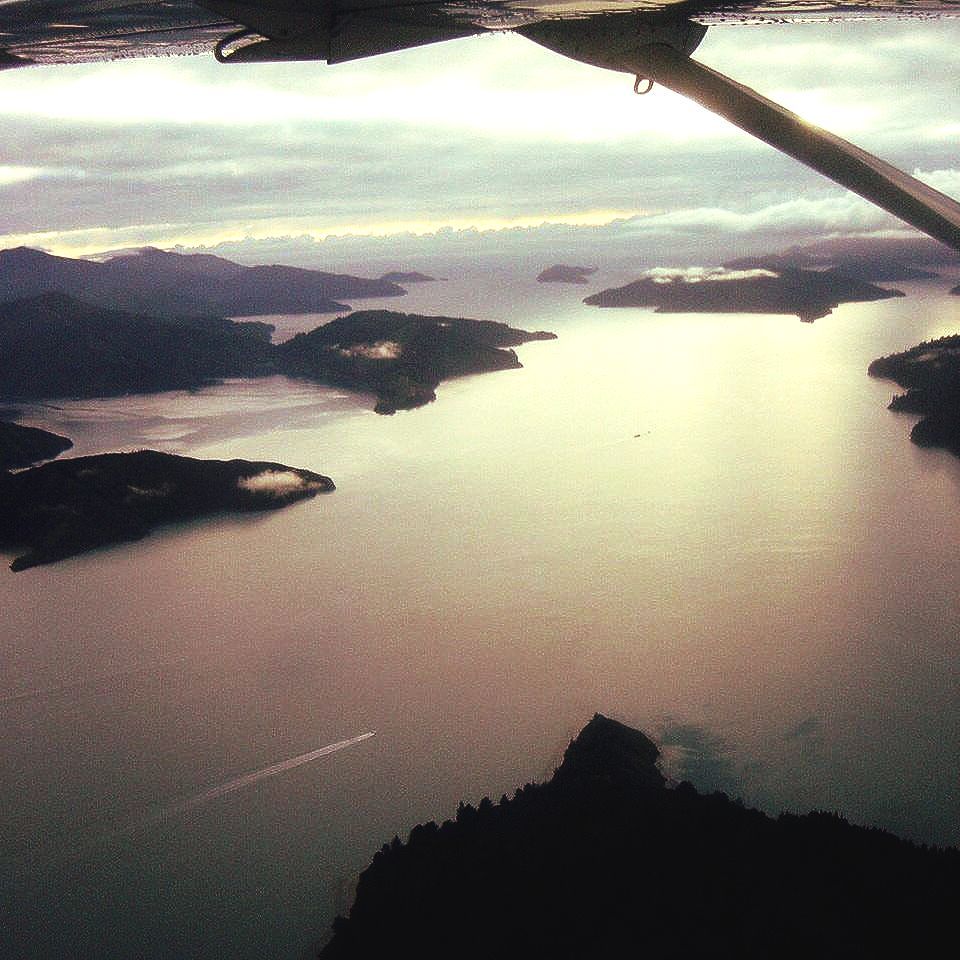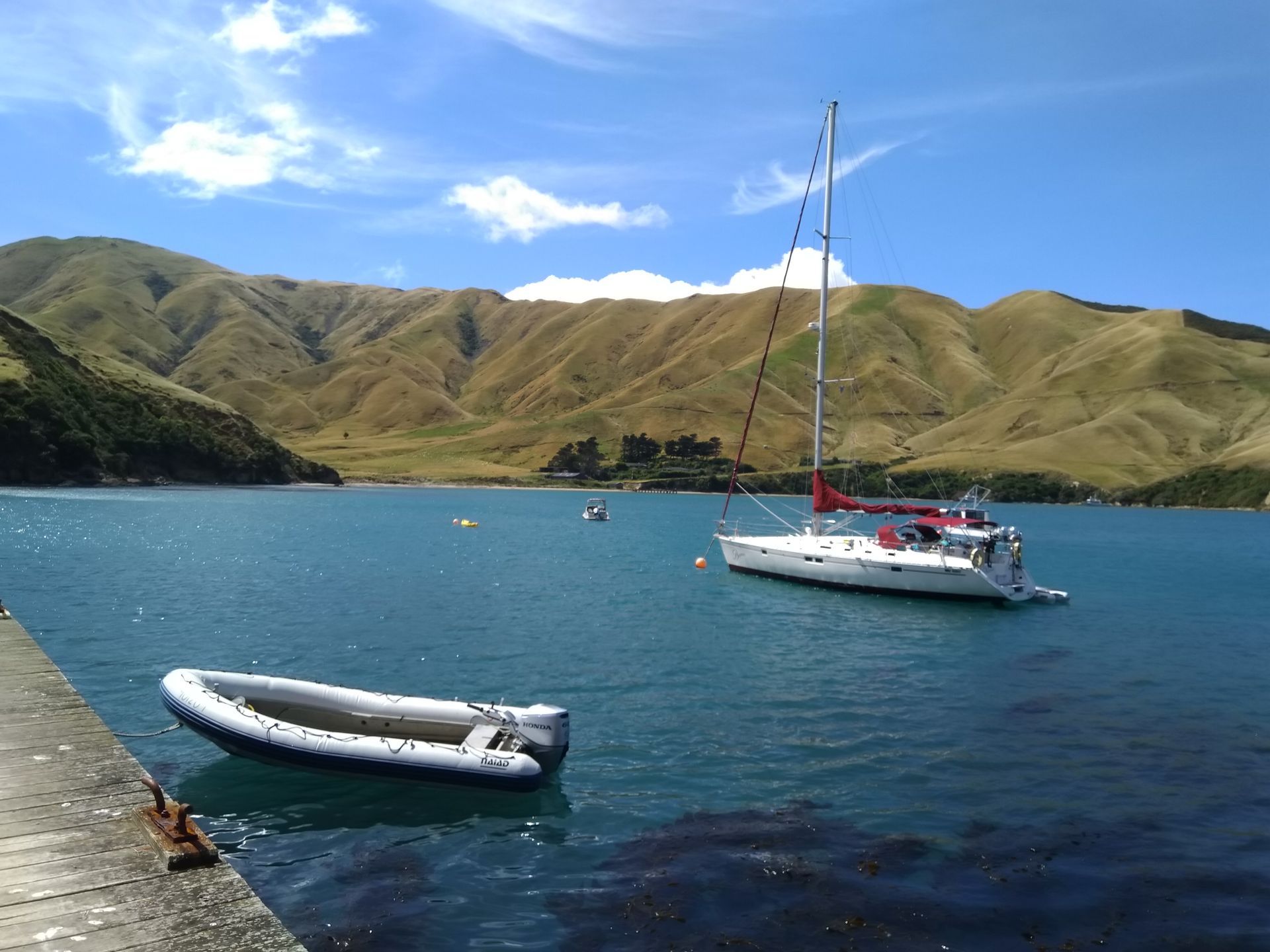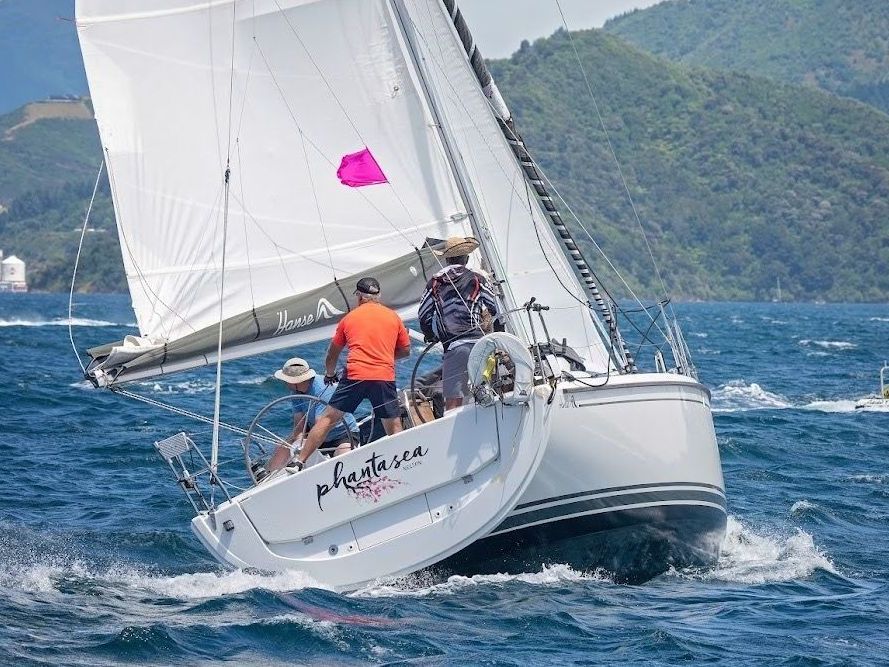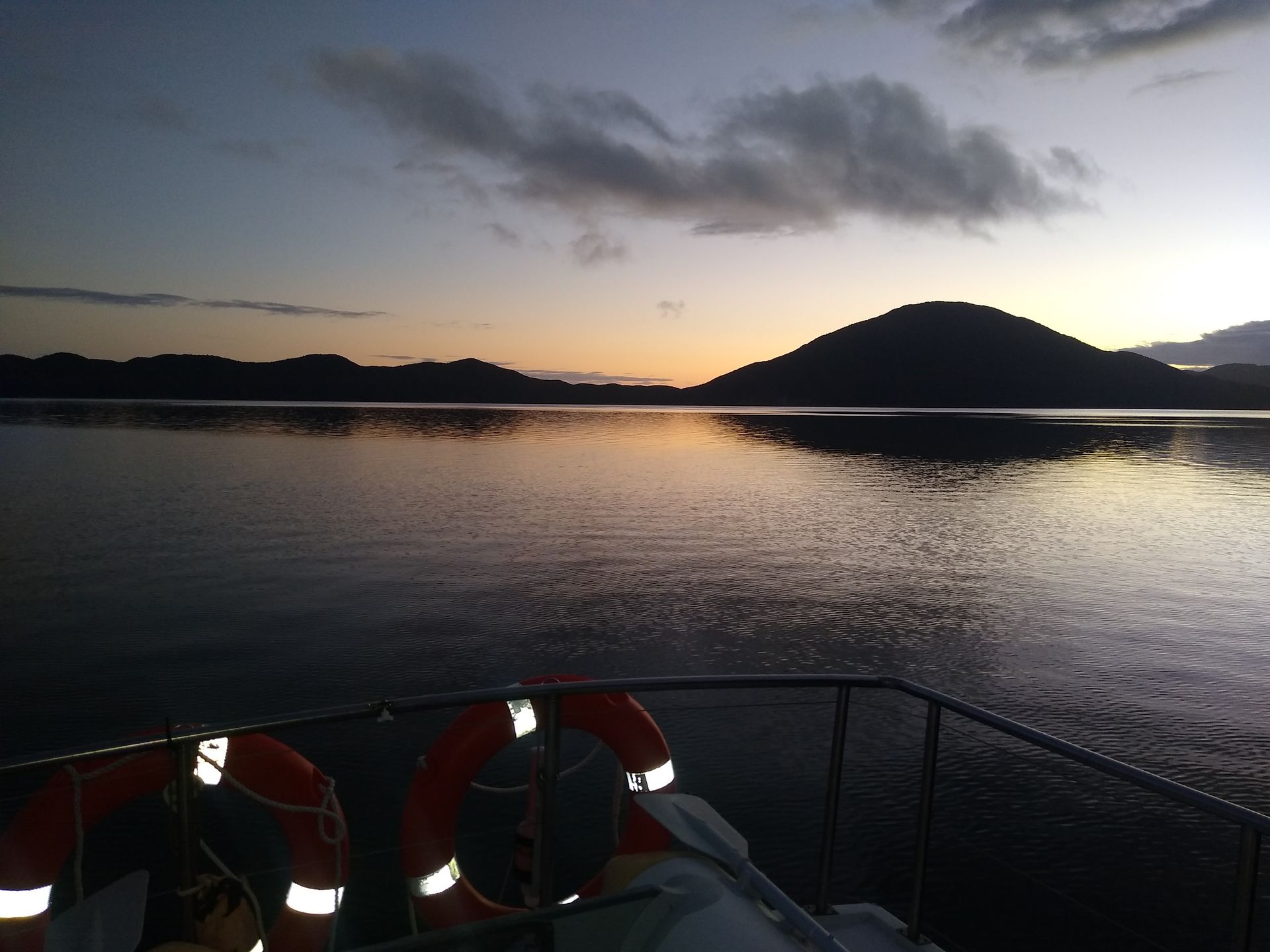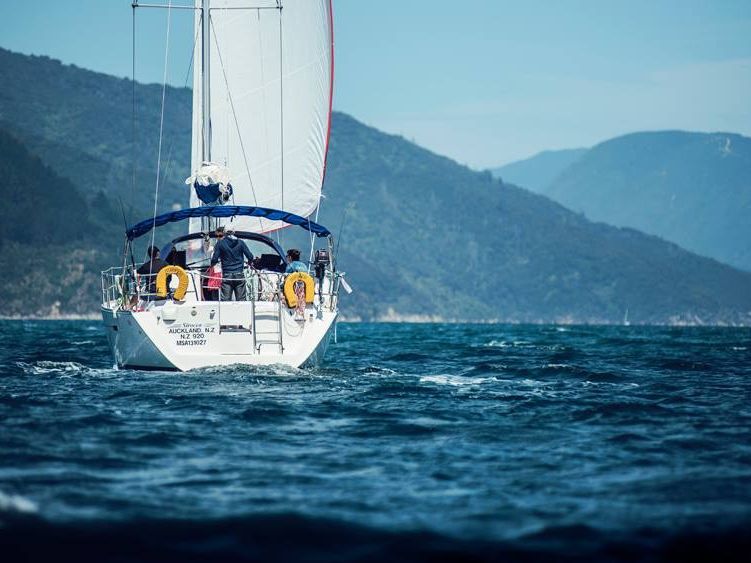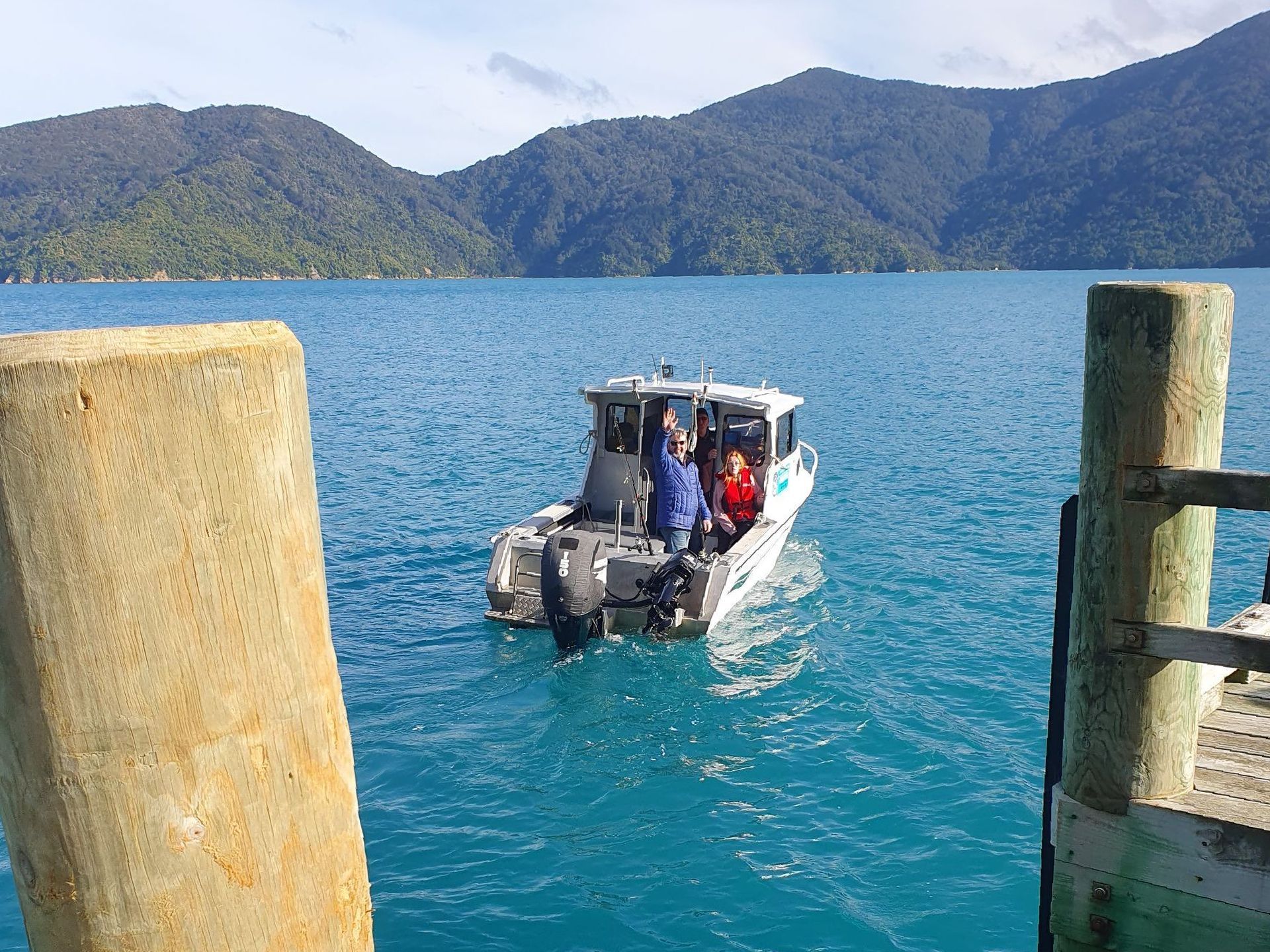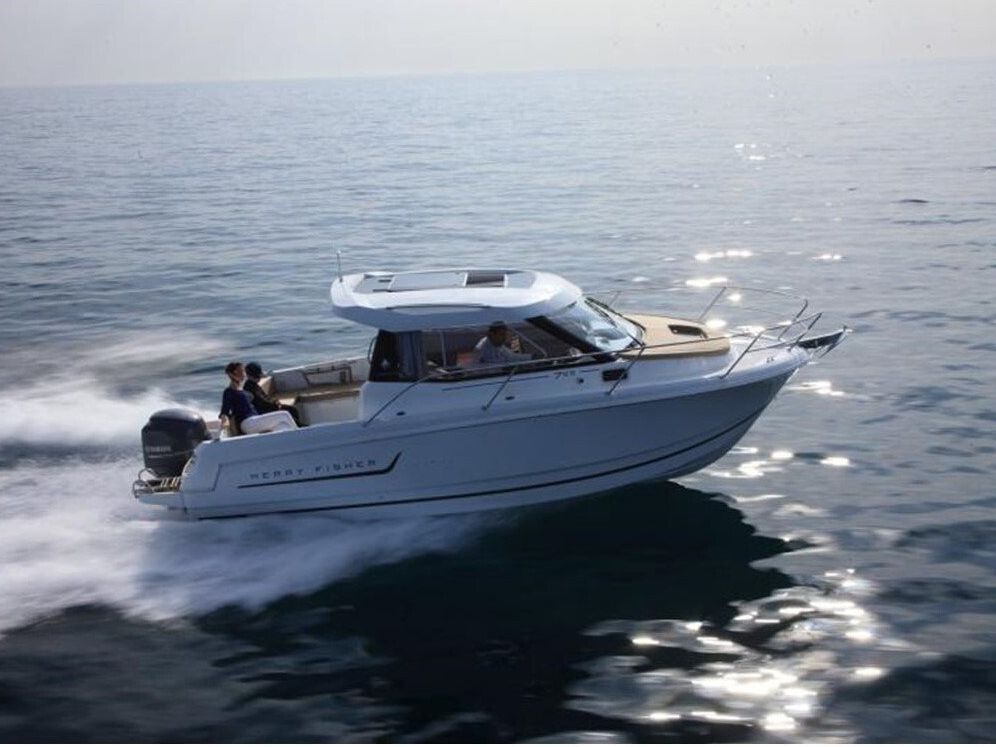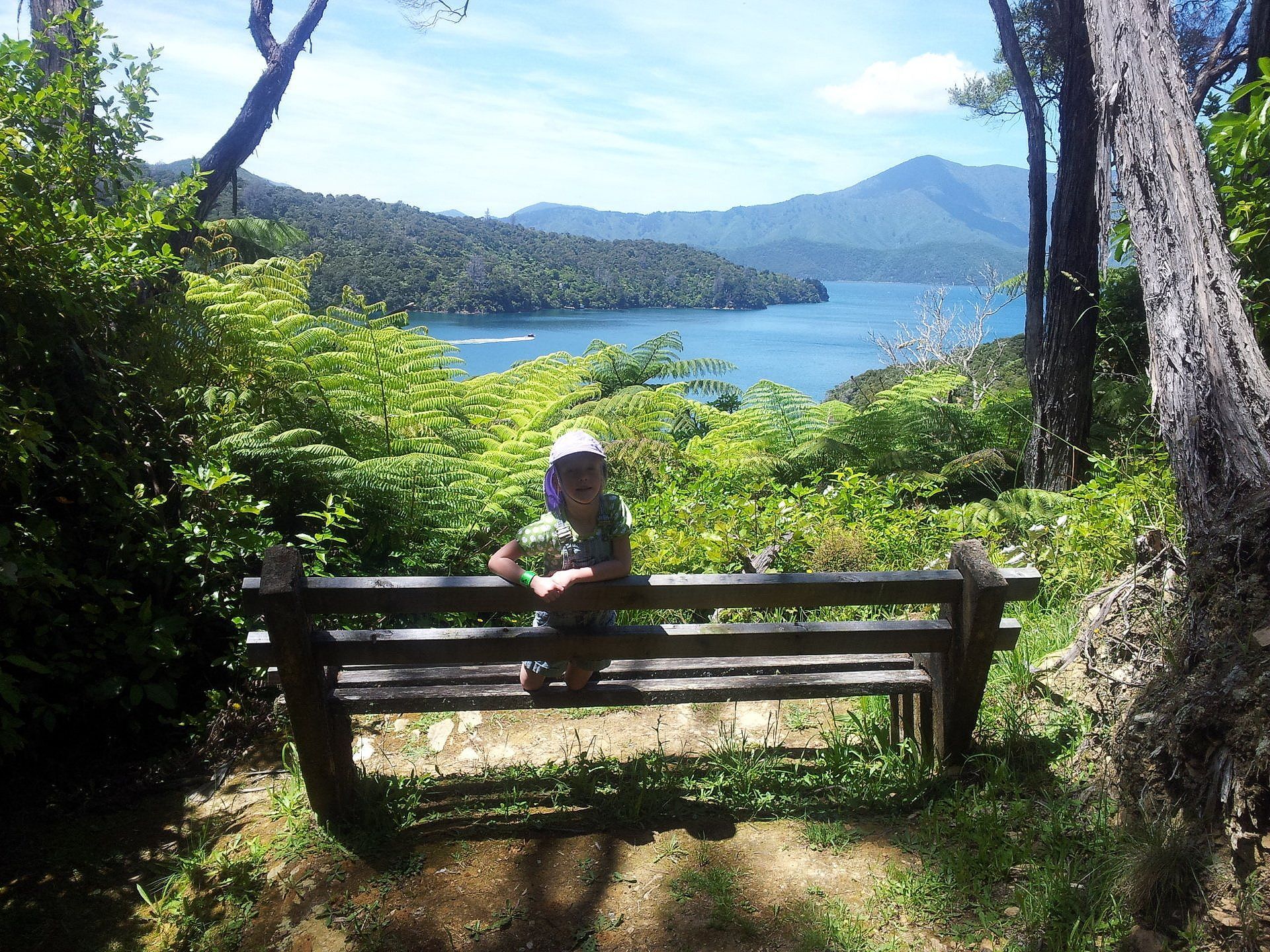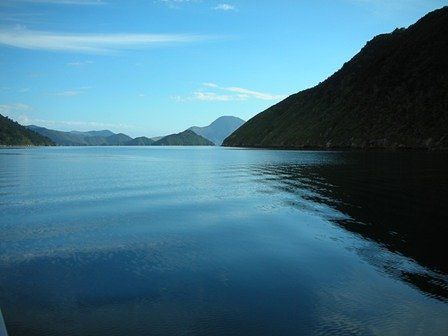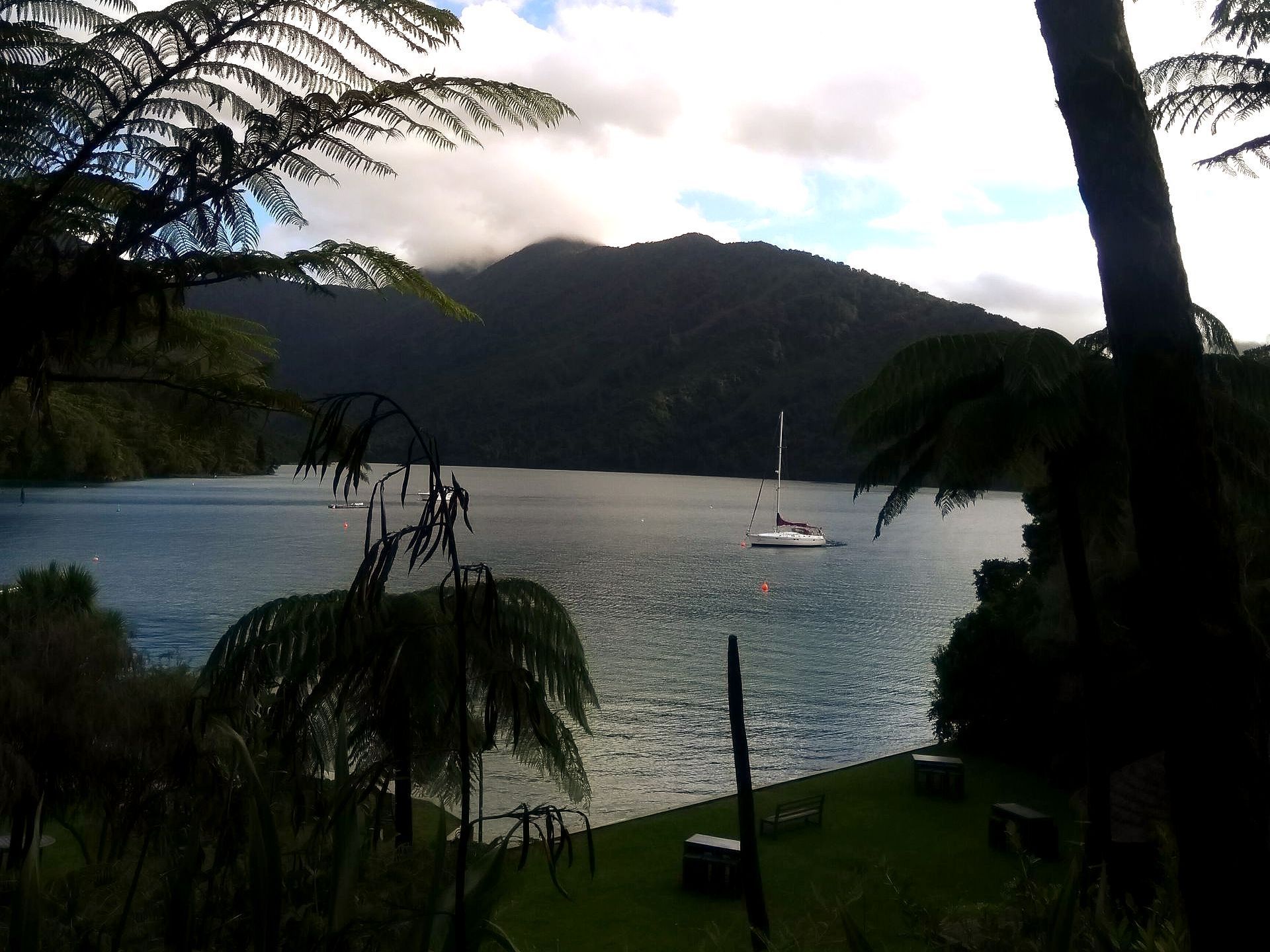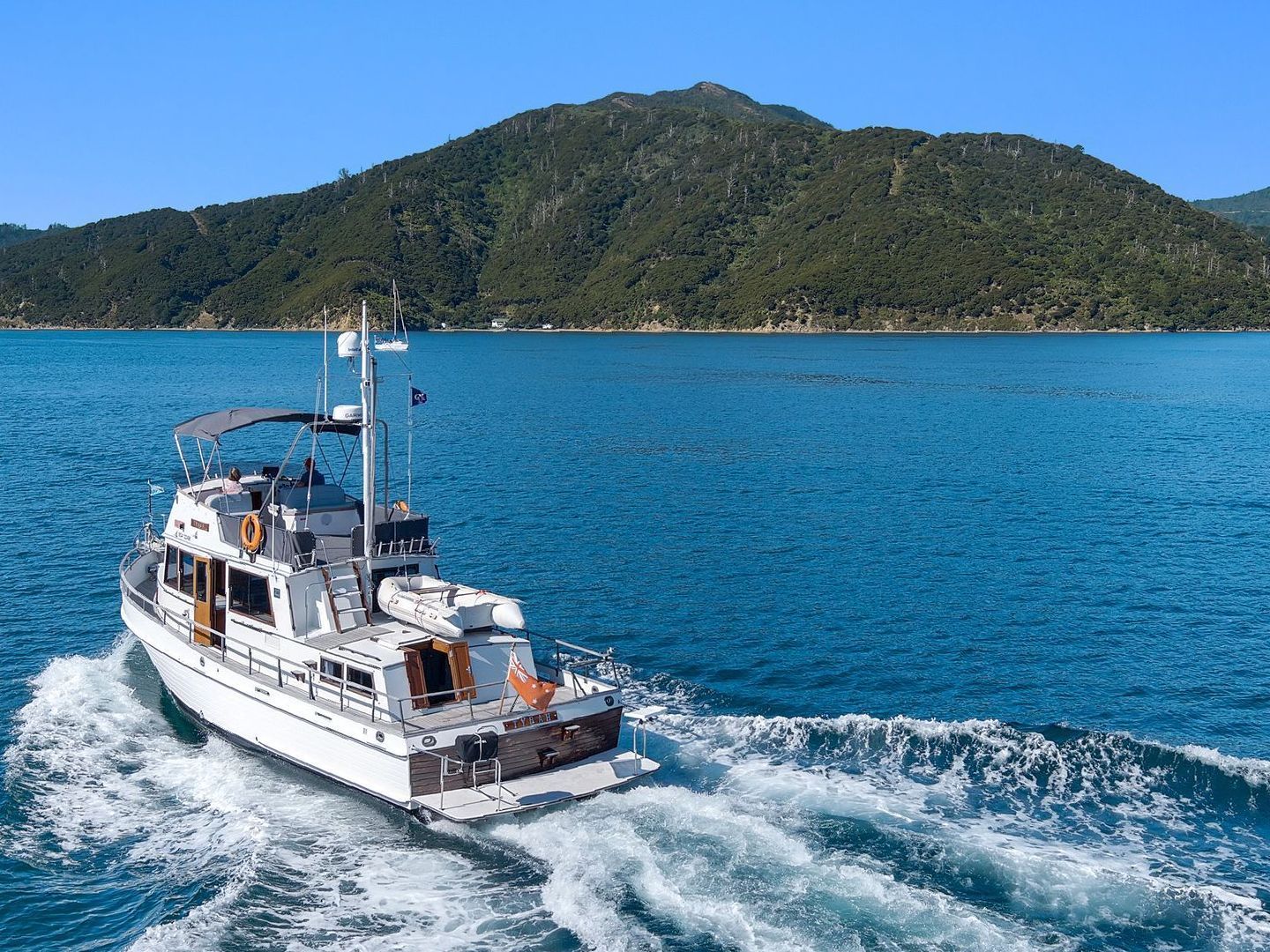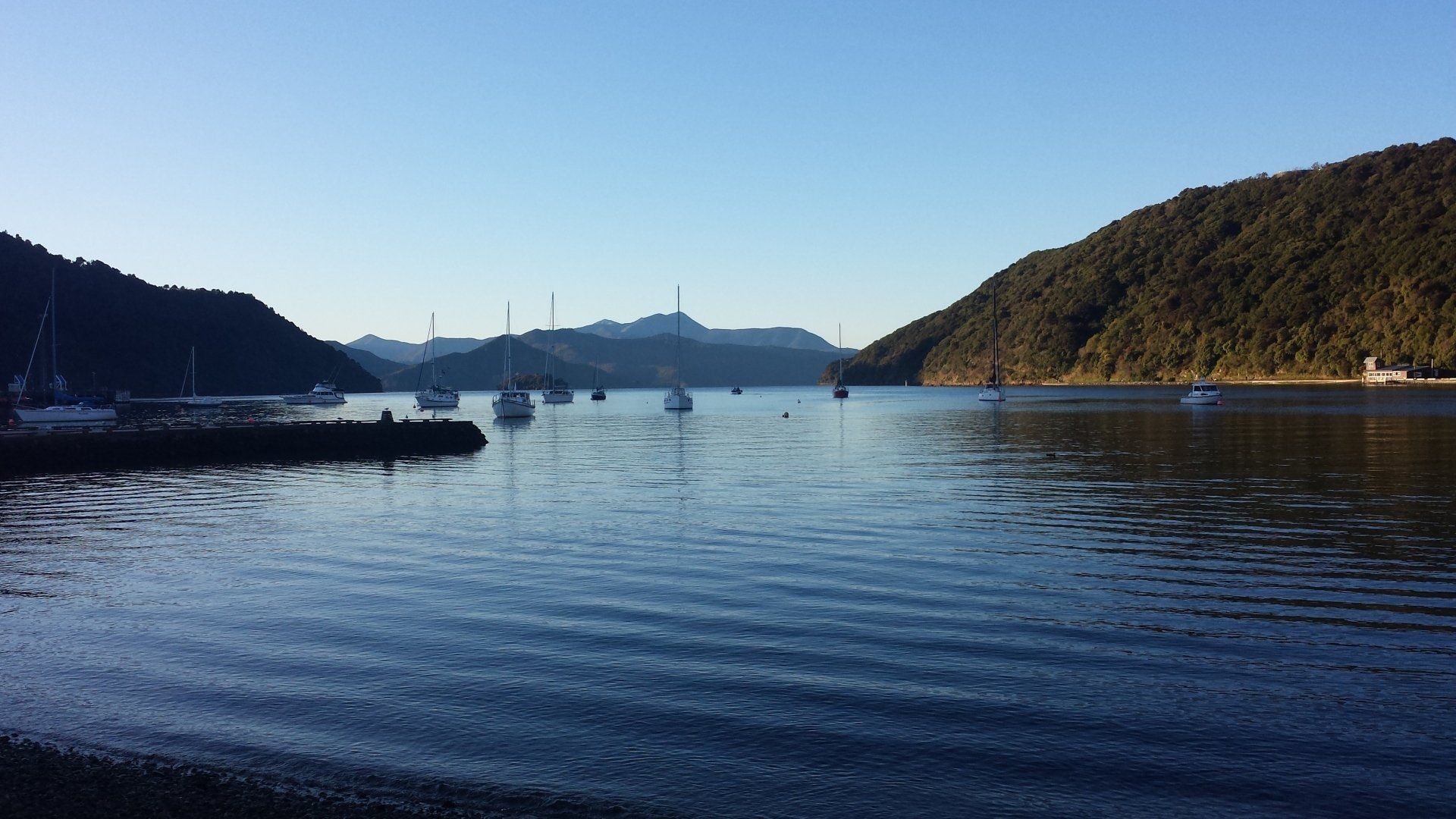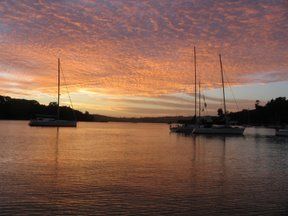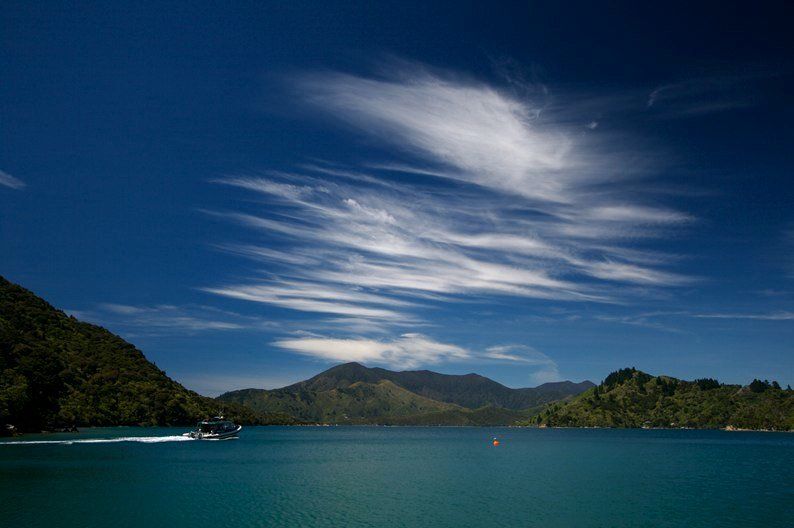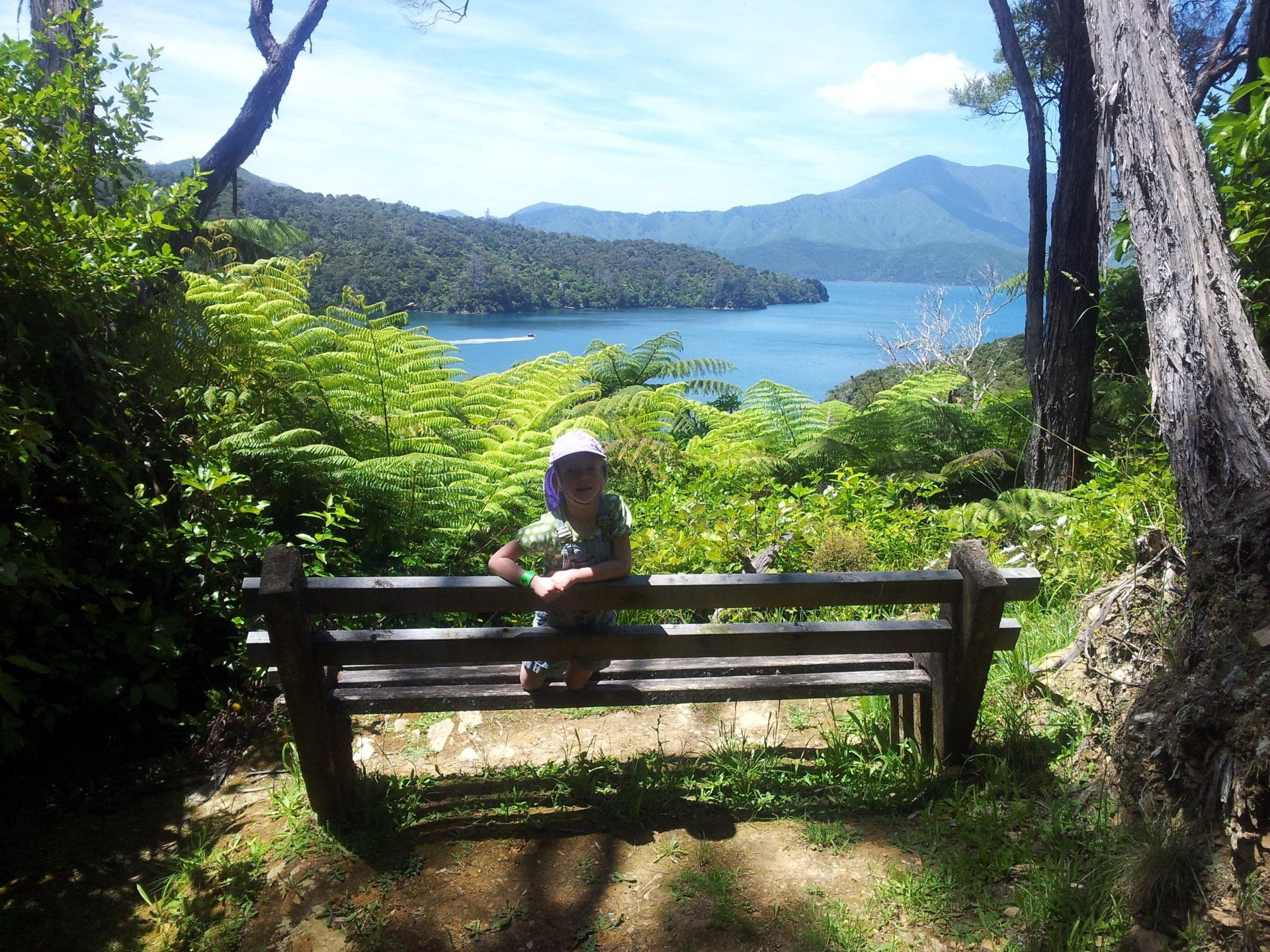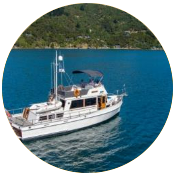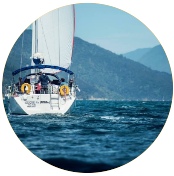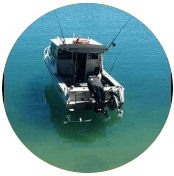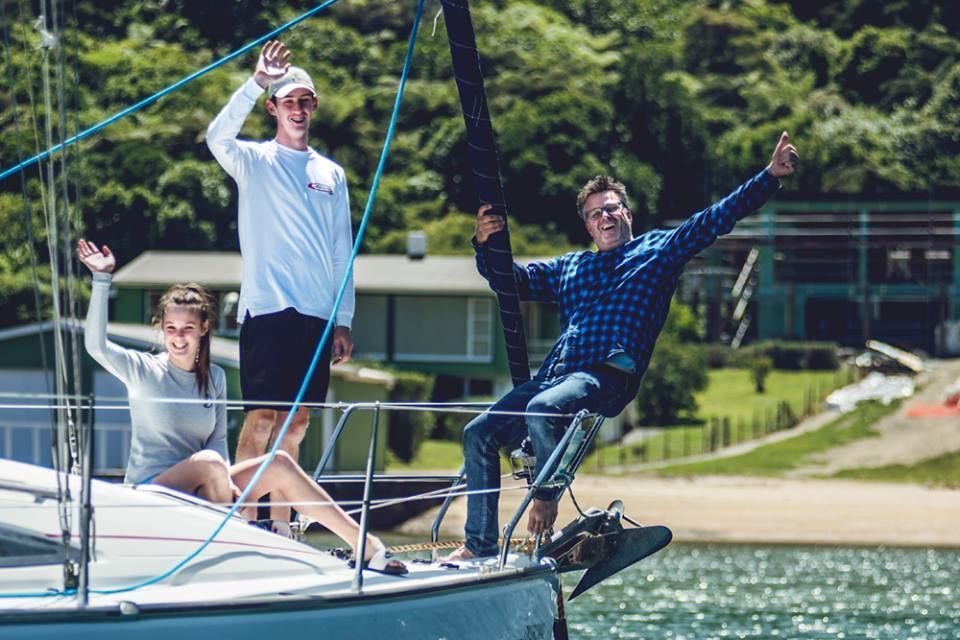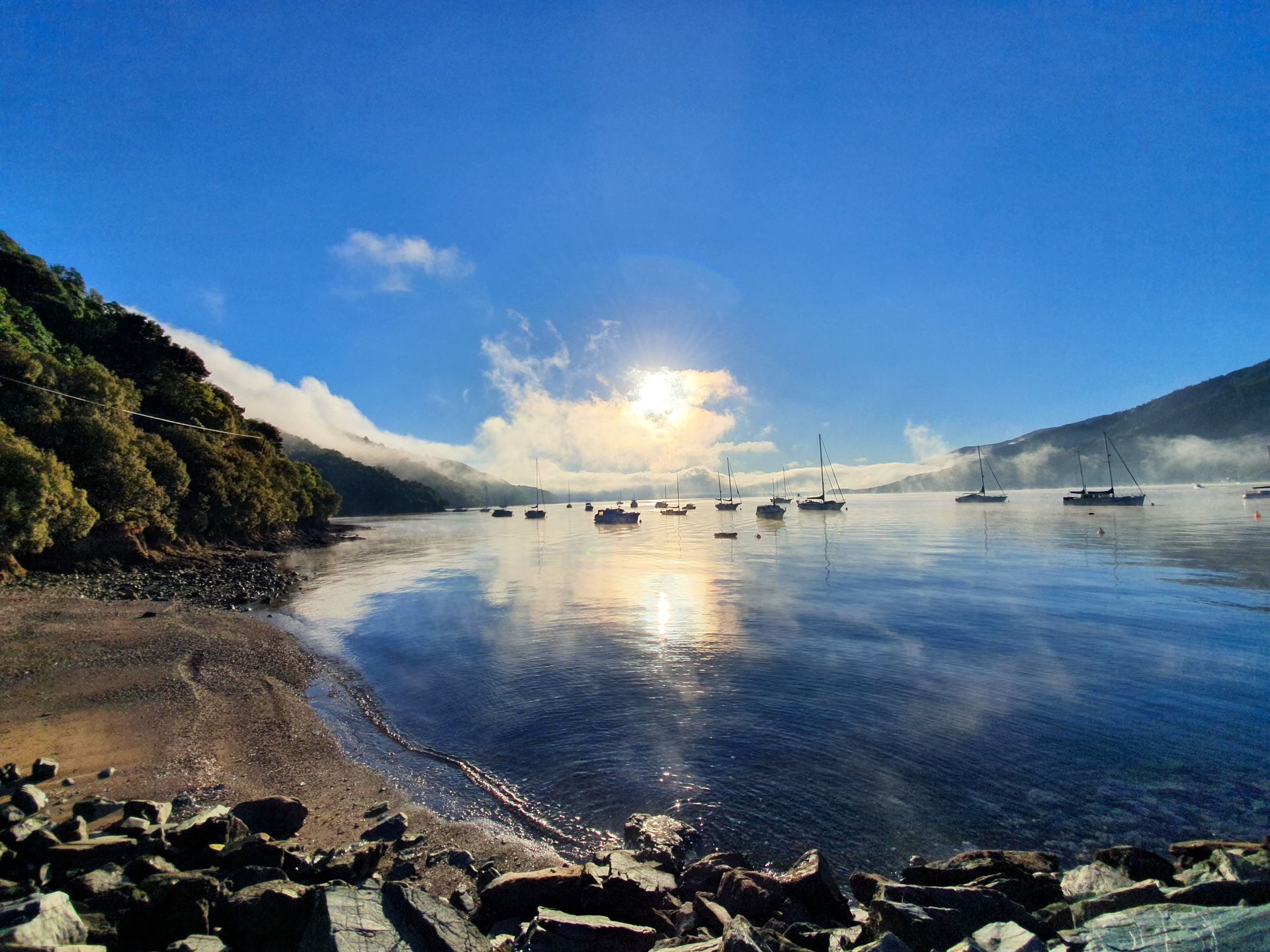Marine mammals are common with seals and dolphins, including the playful Hectors, Bottlenose, and endangered Dusky dolphins making regular appearances. Seasonal visits by Orca are common in the summer months. The significant tidal flow ensures nutrient-rich, clean water which is ideal for aquaculture including salmon and mussel farming.
Much of the Sounds is protected and administered by the Department of Conservation, ensuring large areas of virgin and regenerating native bush are left undisturbed. The isolation of the offshore islands has provided a safe haven for many of NZ's native birds and with native bush to the water line, you will wake to the dawn chorus.
Motuara Island bird sanctuary offers public access (and great views across Cook Strait from the viewing platform at the top of the hill) and you will be joined by inquisitive South Island Robins and fantail, so unafraid that they will even stop for a photo. The island is also home to Okarito Kiwi, Saddleback, and Kakariki as well as the giant Powelliphanta snails and Weta.
More isolated and with access strictly prohibited Stephens Island (off the tip of D'Urville Island) is a Tuatara sanctuary. This living fossil is directly descended from a reptile that flourished over 200 million years ago.
A mecca for diving and snorkeling Long Island Marine Reserve was set up in 1993. The island is predator-free and virtually inaccessible with very limited landing spots (a great natural defense) Underwater, the reef systems are home to sea urchins (kina), abalone (paua), rock lobster (crayfish), and a healthy fish population including blue cod, perch, tarakihi and gurnard. Kelp beds support butterfish and moki.
Fishing conservation has been highlighted and in recent years a size and bag limit for the iconic "blue cod" was introduced to preserve the fishery for the future. The summer sees the return of the snapper to the shallows, in particular in the Pelorus Sound. Interesting cooler water species, less vibrant in colour by contrast to tropical fish find camouflage in the kelp beds with the highly sought-after delicately flavoured crayfish (lobster). The July 15th annual opening of the scallop season always attracts the hardiest of divers in the depth of winter for the first of the season, although at present the Scallop season is closed to allow numbers to regain strength.

